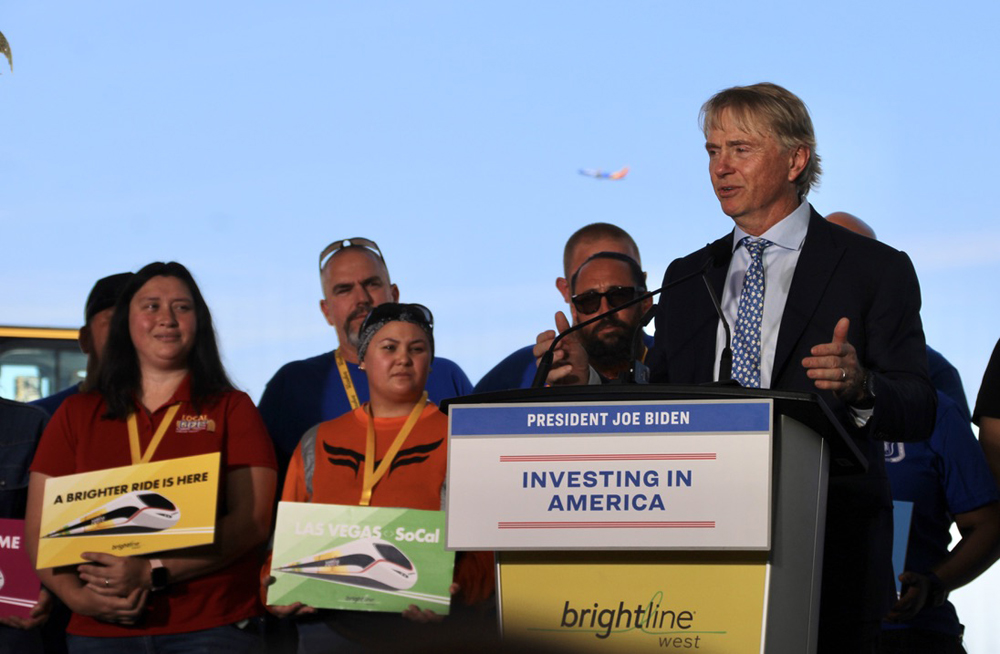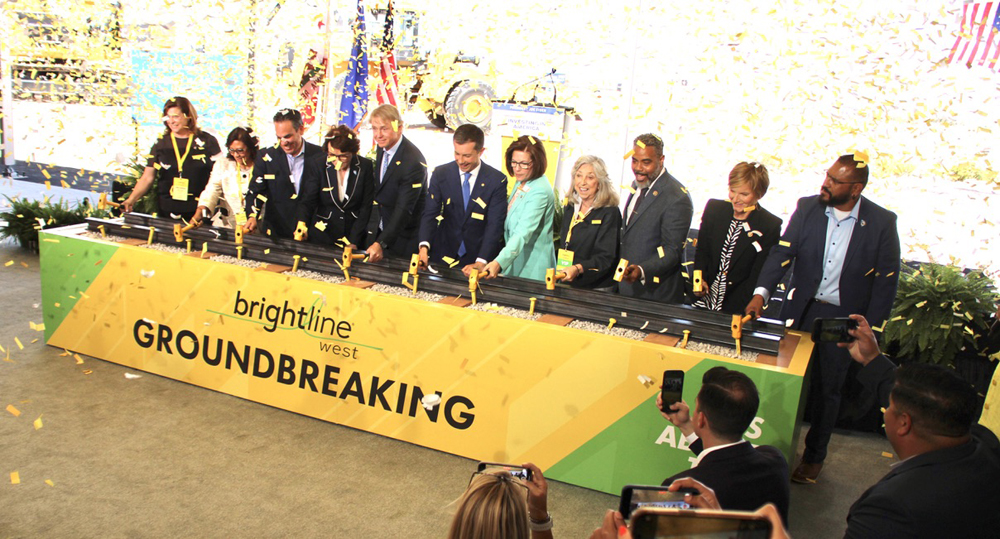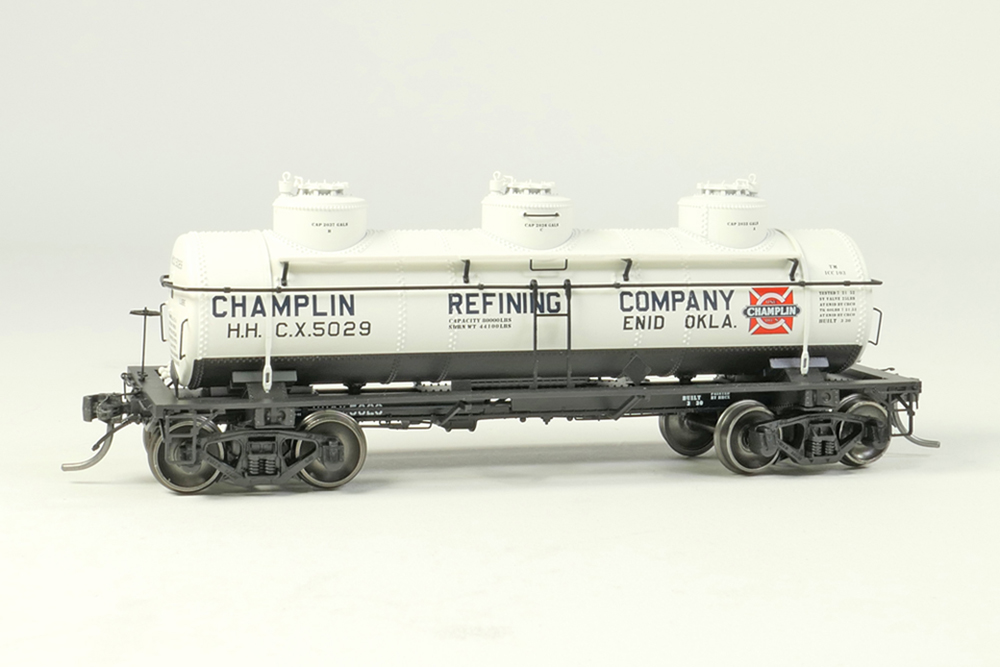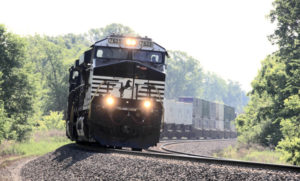
TRAINS: David Lassen
Top executives from Canadian National, Canadian Pacific, CSX Transportation, and Norfolk Southern last week touted the industry’s growth prospects and the ways they are working to make railroads better able to compete against trucks.
Their remarks, made at the RailTrends 2020 conference, came a day after consulting firm Oliver Wyman released a survey that showed major railroad customers overwhelmingly preferred trucks. Railroads will have to become more reliable and more customer-focused in order to maintain market share over the next decade, says Adriene Bailey, a partner at Oliver Wyman [see “Shippers, critical of railroad service, continue to shift to trucks,” Trains News Wire, Nov. 20, 2020].
Norfolk Southern Chief Marketing Officer Alan Shaw says the pandemic has accelerated five freight trends that were already under way — and that railroads can benefit from the changes.
These trends include retailers holding more inventory and keeping it closer to consumers; near-shoring and on-shoring production, particularly from China; tighter service requirements; an increased focus on transportation costs; and blossoming interest in environmental sustainability.
But Shaw says that railroads must do a better job of competing against truck, especially by offering more robust online tools that make it easier to do business with railroads, from ordering cars to monitoring shipments in transit.
“We need to design more of our business around our customer. We need to deliver a consistent, reliable service product. And then you layer on top of this product quality a best in class customer experience,” Shaw says. “And I’m not talking about best in rail — very few would argue that railroads have best in class customer experience — I’m talking about best in logistics. And then you want technology that makes it simpler and easier to do business with Norfolk Southern or the whole rail ecosystem. And you want transparency across the entire supply chain. And we need to deliver service and logistics solutions in order to become relevant to our customers.”
NS is working on all of that, Shaw says, from better service and improved online tools to the new Rail Pulse GPS-based car location and health monitoring system that is under development.
“As we improve our service product and provide a more trucklike product into the growing consumer economy, it creates broader opportunities for the rail ecosystem,” Shaw says.
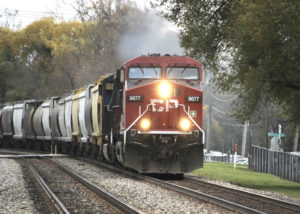
TRAINS: David Lassen
Canadian Pacific CEO Keith Creel says the railway has underestimated its ability to gain carload volume. Three years ago CP figured it could regain between $200 million and $300 million of merchandise traffic revenue, with much of the new business coming from existing customers and its short line partners.
“It’s not $200 to $300 million. It’s a billion,” Creel says. “And if I look at the next 24 to 36 months, if we don’t replicate that and add another billion revenue topline to this company … I’d be disappointed.”
CP’s service is much more reliable under its Precision Scheduled Railroading operating model and the railway has become much easier for customers to work with, Creel says.
Likewise, CSX Transportation CEO Jim Foote says his railroad’s transformation under Precision Scheduled Railroading has improved service.
“We have sped things up by days. We have improved the reliability of our product, which is the key for customers,” Foote says.
“We have improved the reliability dramatically so that many of our customers … refer to our service today as trucklike,” he adds.
As a result, prior to the pandemic CSX had begun to see growth in its merchandise network after years of decline. “We should be able to grow the business at above historical rates,” Foote says. “But it’s a slow process of proving yourself to the shipper community that we can be trusted and earn back that business.”
Canadian National CEO JJ Ruest has said his company would rather have volume and revenue growth than to focus on gaining the last point or two of improvement in its operating ratio.
“In many ways that’s an existential question for the rail industry as you look out over the next decade,” Ruest says.
“We want to be a growth company – a company that’s even more relevant to the economy of North America,” Ruest says.
To get there CN wants to tie itself more closely to the consumer through a focus on intermodal traffic.
The more relevant CN can be to its customers, the more it can grow, Ruest says.
Ruest acknowledged that CN needs to do more to provide full visibility of shipments, whether they are on the railroad, at ports, intermodal terminals, or en route to the customer’s door via truck.
Becoming more customer-centric is part of CN’s long-term strategy, Ruest says.
The annual RailTrends conference is sponsored by independent analyst Anthony B. Hatch and industry trade publication Progressive Railroading.






